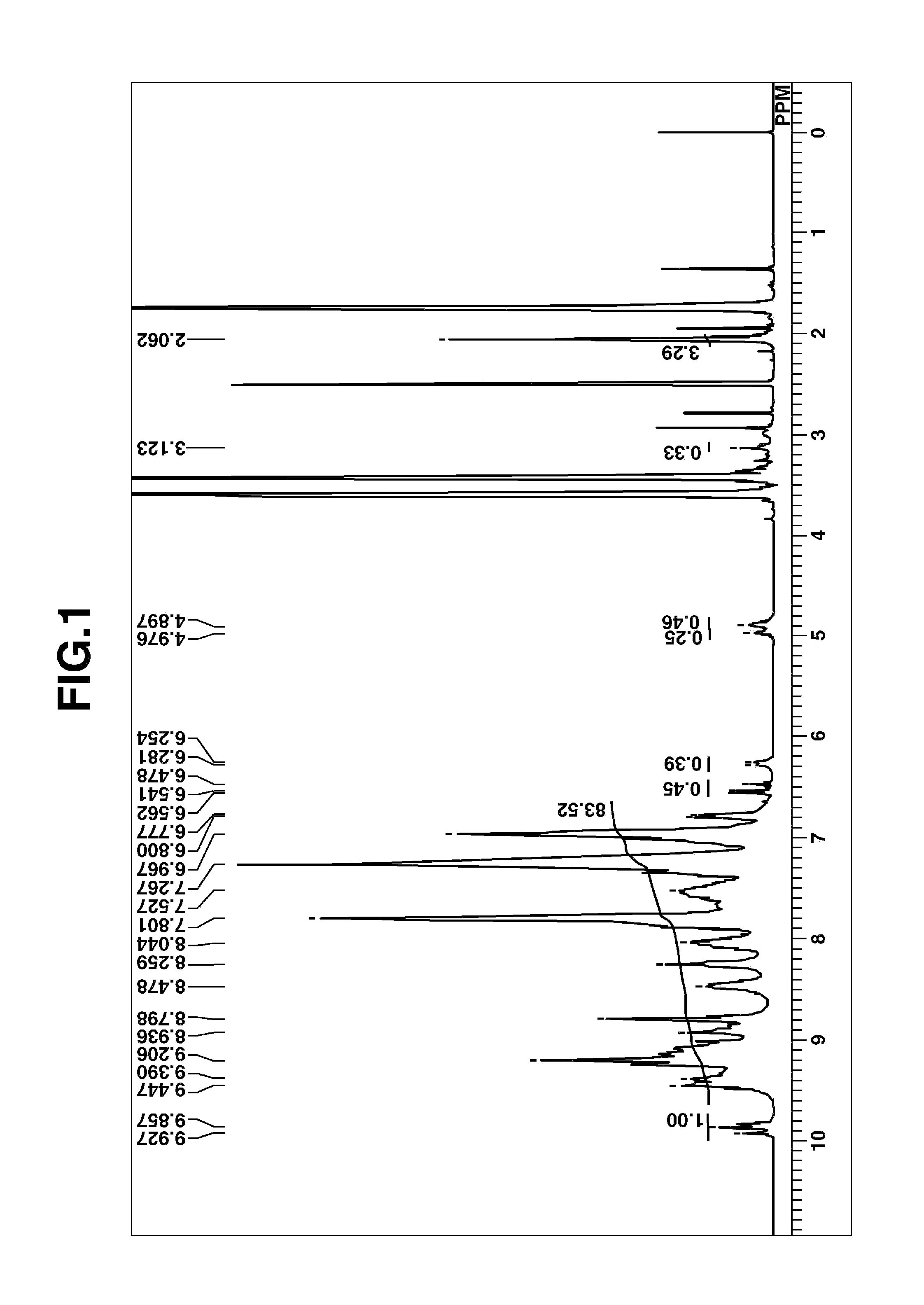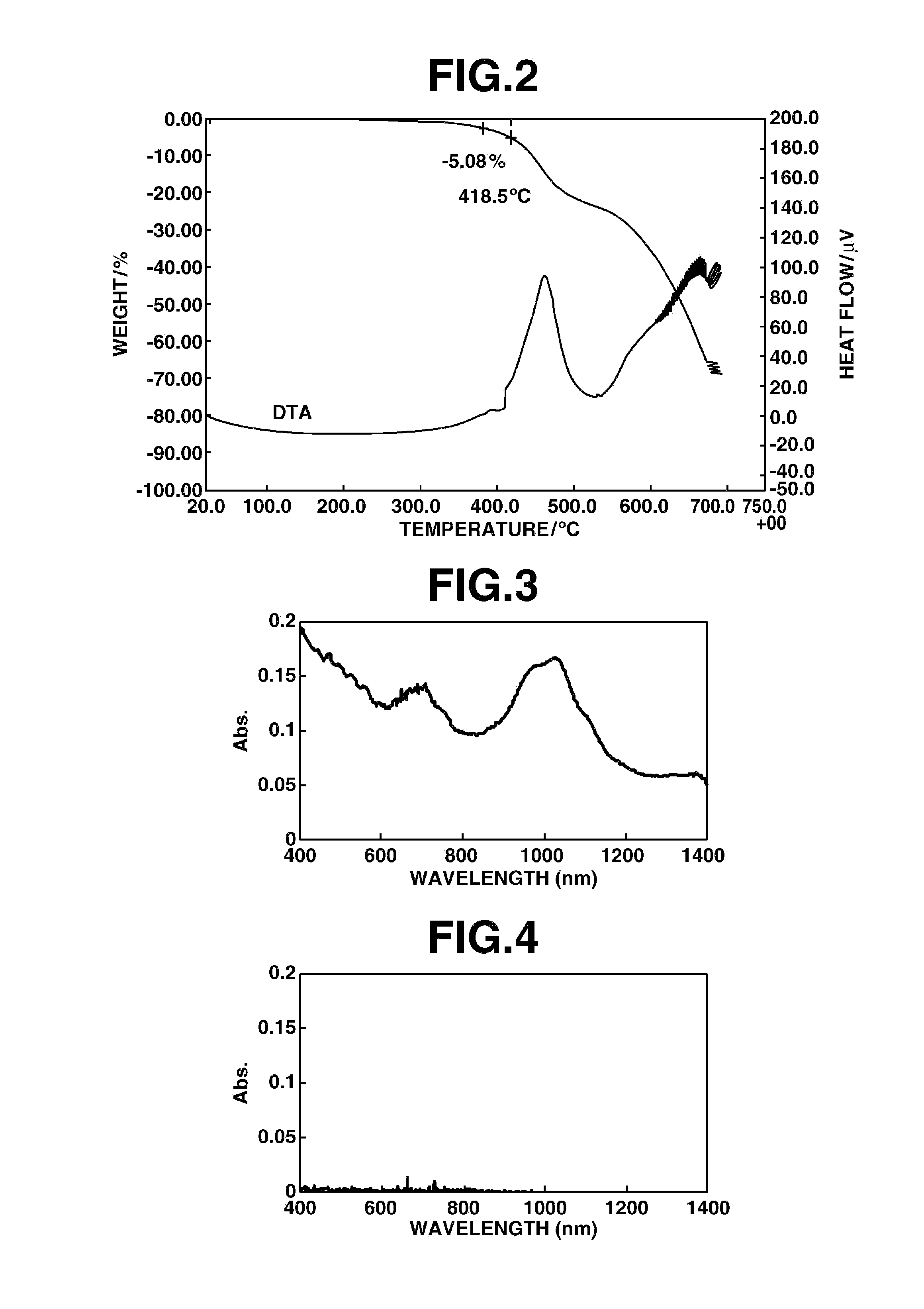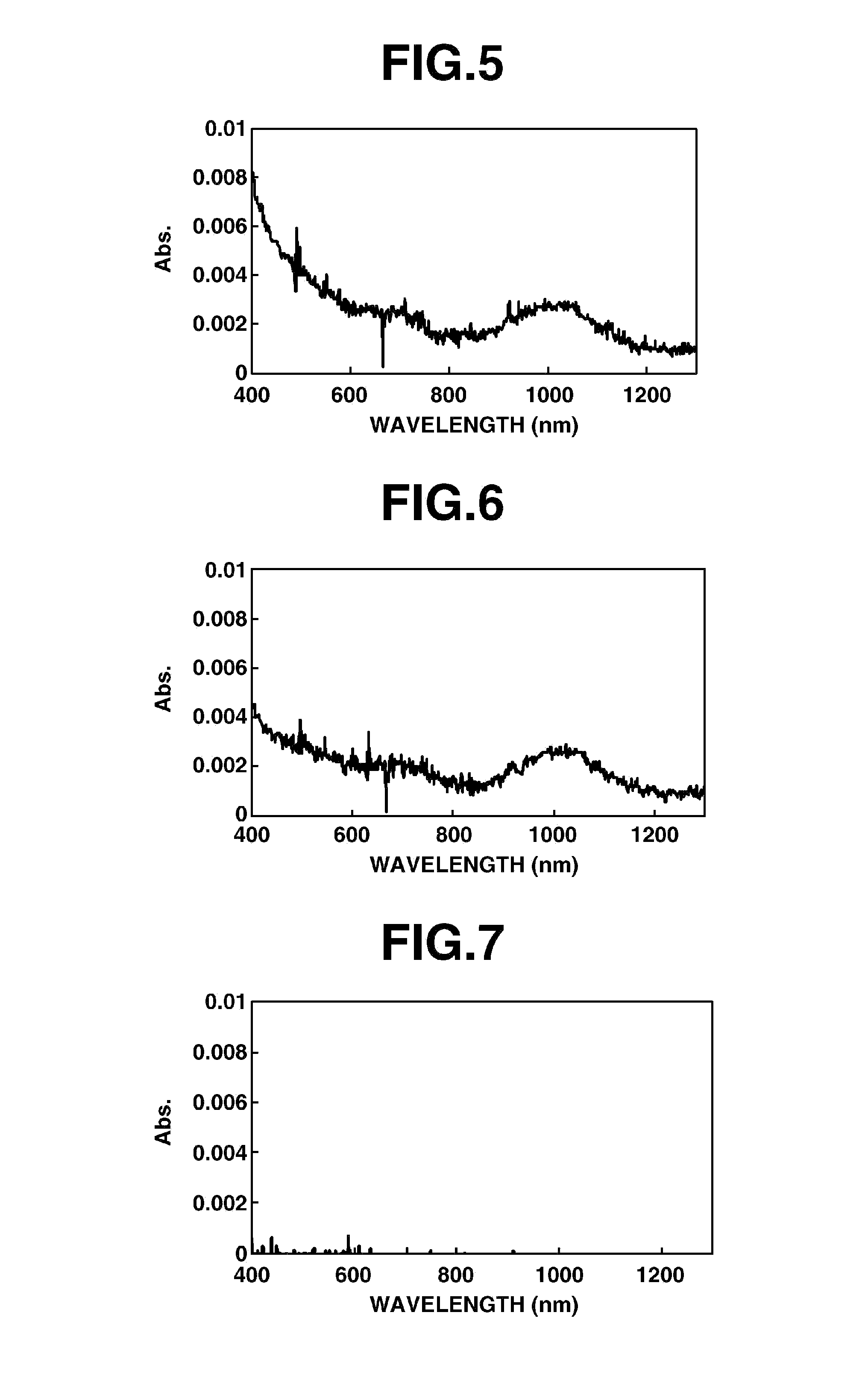Carbon material dispersed film formation composition
a technology of dispersed film and carbon material, which is applied in the direction of coatings, etc., can solve the problems of inability to individually dissolve cnts, inability to store cnts, and general difficulty in dispersing cnts, etc., and achieves high heat resistance, low dispersion of carbon materials, and high refractive index
- Summary
- Abstract
- Description
- Claims
- Application Information
AI Technical Summary
Benefits of technology
Problems solved by technology
Method used
Image
Examples
synthesis example 1
Synthesis of HB-TmDA
[0250]
[0251]Under nitrogen, 456.02 g of DMAc was added to a 1,000 mL four-neck flask and cooled to −10° C. in an acetone-dry ice bath, following which 84.83 g (0.460 mol) of 2,4,6-trichloro-1,3,5-triazine [1] (Evonik Degussa) was added and dissolved therein. Next, both a solution of 62.18 g (0.575 mol) of m-phenylenediamine dissolved in 304.01 g of DMAc and also 14.57 g (0.156 mol) of aniline were added dropwise. After dropwise addition, the flask contents were stirred for 30 minutes, then the reaction mixture was added dropwise over a period of 1 hour using a fluid transfer pump to a reactor consisting of a 2,000 mL four-neck flask to which had been added 621.85 g of DMAc and which was preheated on an oil bath to 85° C. Following addition of the reaction mixture, stirring was carried out for 1 hour, thereby effecting polymerization.
[0252]Next, 113.95 g (1.224 mol) of aniline was added and the flask contents were stirred for 1 hour, bringing the reaction to compl...
production example 1
[0256]A 20 wt % solution (referred to below as “HB-TmDA40V”) was prepared by dissolving 40 g of the HB-TmDA obtained in Synthesis Example 1 and 153.6 g of cyclohexanone and 6.4 g of deionized water.
production example 2
[0257]A 20 wt solution (referred to below as “20E-35EV”) was prepared by dissolving 1.0 g of ethoxylated glycerol triacrylate (NK Ester A-GLY-20E, from Shin-Nakamura Chemical Co., Ltd.) and 0.3 g of ethoxylated pentaerythritol tetraacrylate (NK Ester ATM-35E, from Shin-Nakamura Chemical Co., Ltd.) in 5.0 g of cyclohexanone and 0.2 g of deionized water.
PUM
| Property | Measurement | Unit |
|---|---|---|
| temperature | aaaaa | aaaaa |
| temperature | aaaaa | aaaaa |
| temperature | aaaaa | aaaaa |
Abstract
Description
Claims
Application Information
 Login to View More
Login to View More - R&D
- Intellectual Property
- Life Sciences
- Materials
- Tech Scout
- Unparalleled Data Quality
- Higher Quality Content
- 60% Fewer Hallucinations
Browse by: Latest US Patents, China's latest patents, Technical Efficacy Thesaurus, Application Domain, Technology Topic, Popular Technical Reports.
© 2025 PatSnap. All rights reserved.Legal|Privacy policy|Modern Slavery Act Transparency Statement|Sitemap|About US| Contact US: help@patsnap.com



